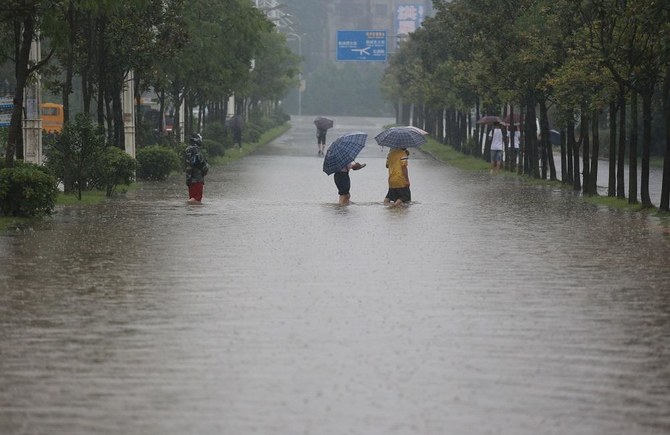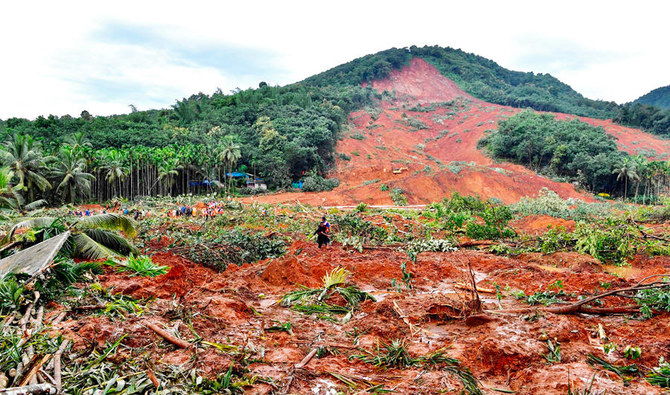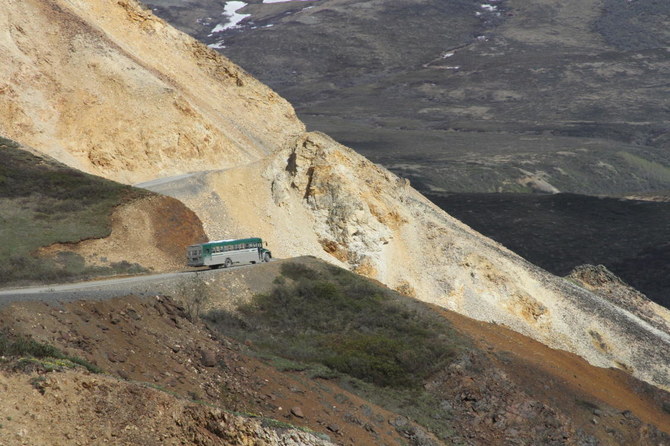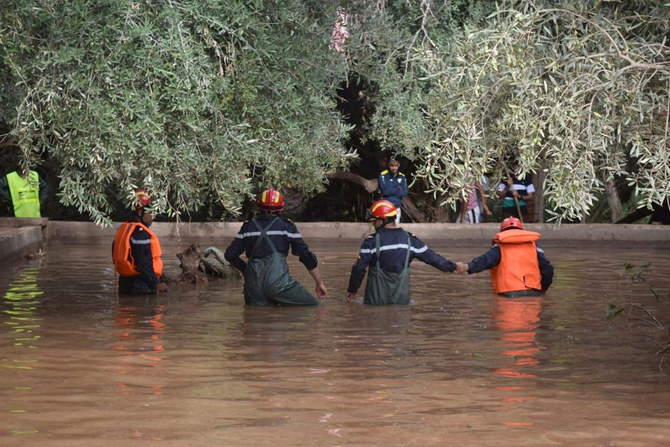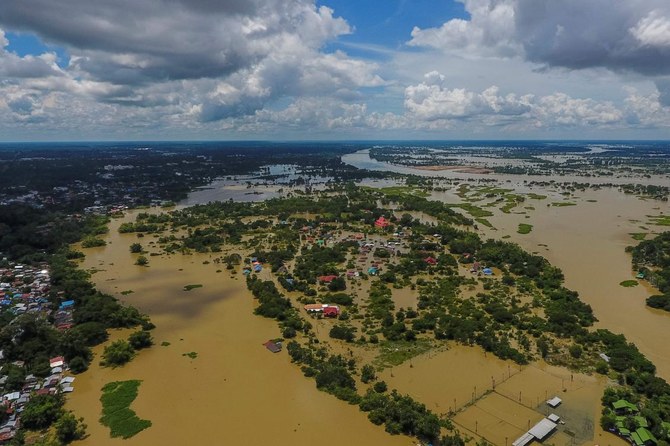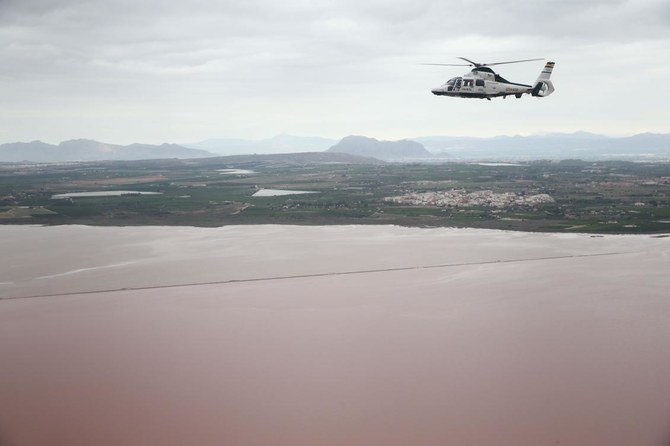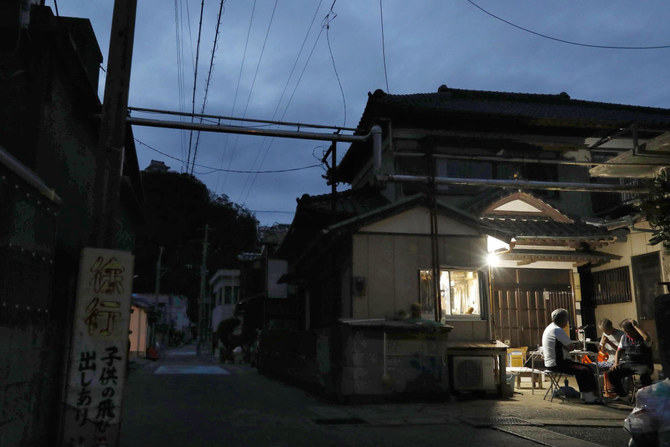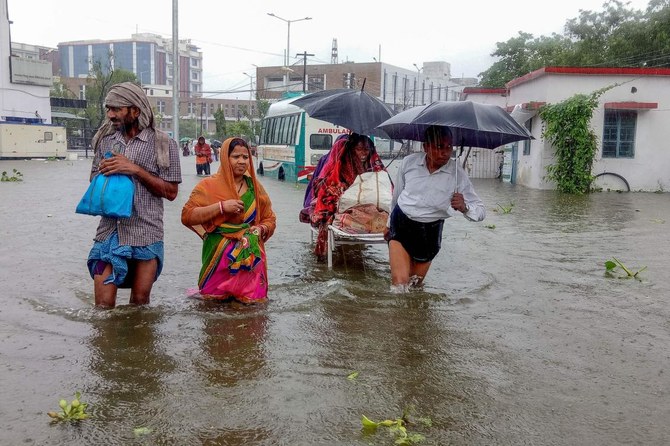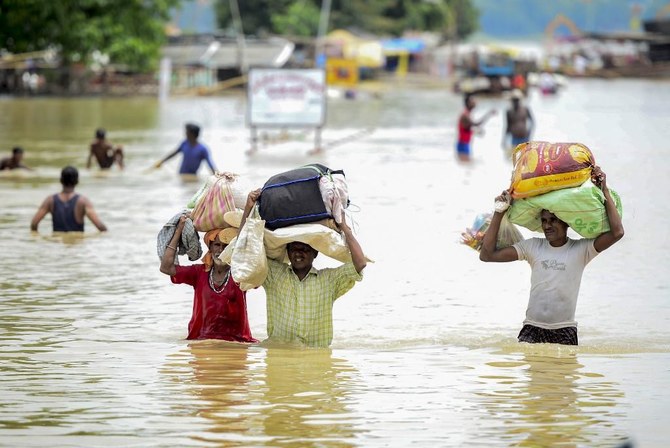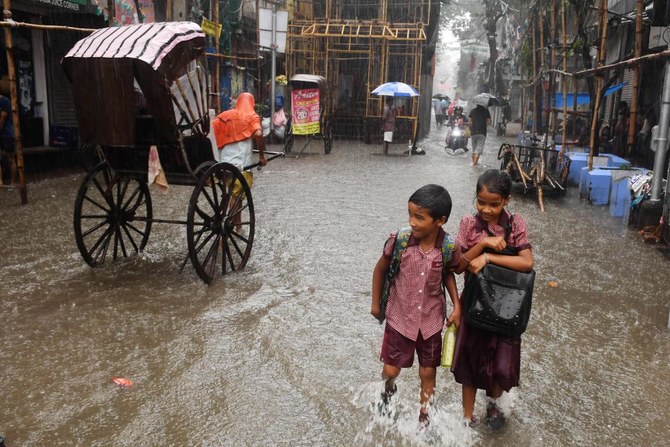Thailand’s northeast inundated after tropical storm
Since August 29, 32 people have been killed in the deluge. (File/AFP)
September 14, 2019 - Floods in northeastern Thailand have submerged homes, roads and bridges, leaving more than 23,000 people in evacuation shelters as anger grows over the government’s “slow” emergency response.
Torrential rain has lashed the country for the last two weeks, causing flash floods and mudslides in almost half its provinces, with families evacuated from their homes in boats or makeshift rafts.
Since August 29, 32 people have been killed in the deluge, said a statement from the disaster department on Saturday that also gave the number of people staying in emergency shelters.
Two weather events are behind the widespread floods, the department said - Storm Podul and a tropical depression that formed over the South China Sea called Kajiki.
Local media reports from the worst-hit province of Ubon Ratchathani showed people wading through chest-deep water and rescuers in boats trying to steer buffalo to higher ground.
Flooding in the province, which borders Laos and Cambodia, has been exacerbated by rising water levels in the Moon and Chi rivers.
“It will take three weeks to drain the floodwater” from up to 90 percent of inundated households, said provincial governor Sarit Witoon.
Spanish PM visits flood-hit areas
A handout picture released by the press office of the Spanish premier on September 14, 2019 shows a helicopter flying over flooded areas near Orihuela. (File/AFP)
September 14, 2019 - MADRID: Spanish Prime Minister Pedro Sanchez on Saturday visited
the country's flood-stricken southeastern regions, where five people have died and 3,500 forced to flee their homes, as train and air services were disrupted for yet another day.
Since Wednesday, areas here suffered some of the heaviest daily rainfall on record, which caused chaos on the roads, cutting public transport and prompting rivers to burst their banks.
Flash floods swept away cars and swamped homes in the regions of Valencia, Murcia and eastern Andalusia. Five people died in separate accidents as they tried to cross flooded roads in cars, including a man whose vehicle got stuck in a tunnel on Friday in the center of the coastal city of Almeria.
After observing the damage from a helicopter flying over the city of Orihuela in the region of Valencia, Sanchez visited a command center for emergency operations, his office said.
In addition to some 1,500 people who were evacuated earlier, officials on Friday removed another 2,000 residents of the town of Santomera in the region of Murcia as a precaution due to a controlled release from a local dam to avoid overflowing, the interior ministry said. Spain’s King Felipe VI lamented the loss of life and the damage.
The storm moved further west on Saturday, causing a flash flood in the village of Alhaurin el Grande in the province of Malaga that washed away about a dozen cars, local officials said.
The airport in Murcia, which was closed on Friday due to the flooding, re-opened on Saturday, although two flights that were due to land on the holiday island of Ibiza were diverted to another Spanish airport and another two flights were canceled due to the bad weather, Spanish airports operator AENA said.
Rail services across southeastern Spain remained disrupted on Saturday, with several routes in Valencia and Murcia suspended, state-owned train operator said in a statement.
Almost 80,000 homes still without power a week after Japan typhoon
Residents gather near lights from a generator as the struggle to recover power systems damaged by Typhoon Faxai continued in Chiba prefecture, south of Tokyo. (Shinji Kita/Kyodo News via AP)
September 16, 2019 - TOKYO: Almost 80,000 homes are still without power a week after a powerful typhoon battered eastern Japan, authorities said Monday, with sustained heavy rain prompting evacuation orders and hampering recovery efforts.
Typhoon Faxai powered into the Tokyo region in the early hours of Monday last week, packing record winds that brought down power lines, disrupted Rugby World Cup preparations and prompted the government to order tens of thousands of people to leave their homes.
The storm killed two people, with at least three elderly later confirmed dead due to heatstroke as temperatures soared to above 35 degrees Celsius (95 degrees Fahrenheit) in areas affected by a post-typhoon blackout.
Some 78,700 households were still without power in Chiba, southeast of the capital, Tokyo Electric Co. (TEPCO) spokesman Naoya Kondo said. “A complete recovery is still unlikely until September 27 as we have difficulties in mountain areas,” he added.
Some 16,700 households were also without water because several water purification plants had no power, a local official said.
With help from the military, officials were dispatching water tanker trucks to the affected areas.
The national weather agency Monday issued new warnings for heavy rain in Chiba, while local authorities issued non-compulsory evacuation orders to 46,300 people due to the risk of landslides.
“A delay in recovery work is expected due to heavy rain,” said Kenta Hirano, a disaster management official in Futtsu in Chiba, where more than 1,000 houses were damaged by the typhoon. Local media showed residents in Chiba hurriedly covering broken roofs with blue tarps.
